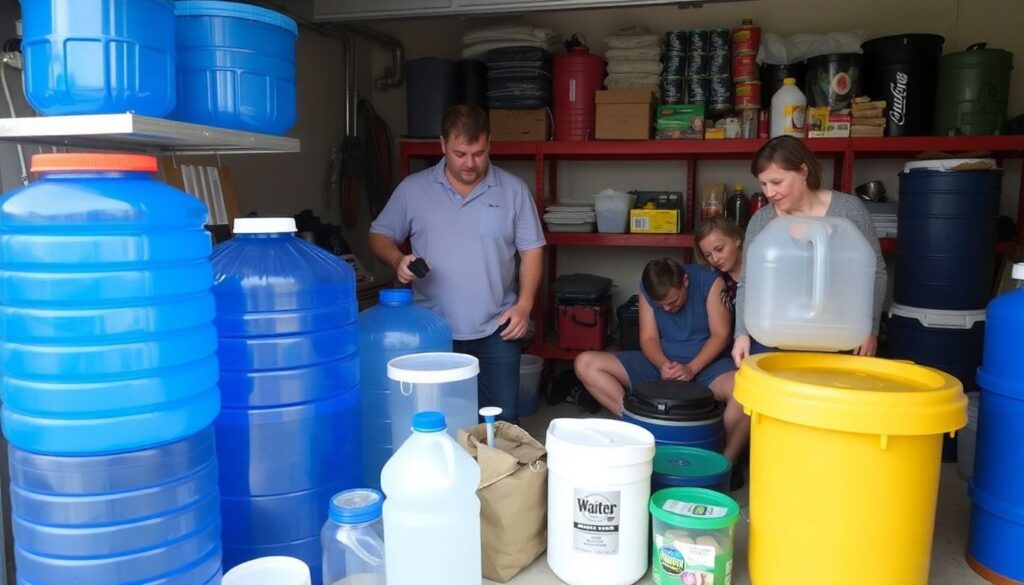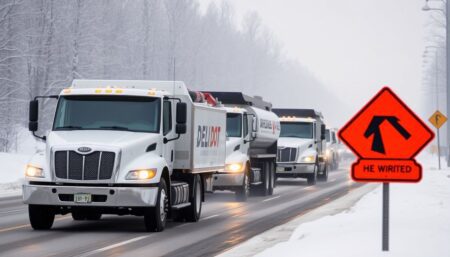Have you ever wondered how much water you actually use in a day? From brushing your teeth to cooking dinner, the average person uses around 80-100 gallons (303-379 liters) of water daily. Now, imagine a scenario where this vital resource becomes scarce, and you’re left to fend for yourself. Scary, isn’t it? This is where understanding and implementing water storage secrets become not just a smart idea, but a necessity.
Agree with me when I say that water is the elixir of life. It’s the single most important resource for our survival, yet it’s often taken for granted. According to the United Nations, around 2.2 billion people lack access to safely managed drinking water, and by 2025, two-thirds of the world’s population could be living in water-stressed conditions. These alarming statistics should serve as a wake-up call, urging us to take proactive measures to ensure a clean water supply, especially in times of crisis.
Promise me that after reading this article, you’ll have a comprehensive understanding of long-term water storage, emergency water supply, and the best practices to maintain a clean water supply in any crisis. We’ll delve into the science behind water storage, explore various storage options, and discuss the importance of regular maintenance and rotation. We’ll also bust some common myths and provide practical tips to help you prepare for any water-related emergency.
Now, let’s embark on this journey together. Picture this: a sudden power outage due to a severe storm, leaving your water treatment plant inoperable. Or perhaps a burst pipe in your neighborhood, contaminating the local water supply. These are real-life scenarios that could happen to anyone, at any time. So, the question is, are you ready to face such challenges? If not, stick around, because by the end of this article, you’ll be equipped with the knowledge and tools to ensure a clean water supply in any crisis.
Mastering the Art of Long-Term Water Storage for Emergency Situations
In the grand tapestry of emergency preparedness, one thread that often goes unnoticed yet is crucial to our survival is the art of long-term water storage. Water, the elixir of life, is not a luxury in times of crisis; it’s a necessity. Imagine this: a sudden, catastrophic event leaves you isolated, your water supply cut off. The tap drips no more, and the supermarket shelves are bare. Panic sets in, but not for you, for you have mastered the art of long-term water storage. You stride confidently to your water reserve, a testament to your foresight, and fill your glass with life’s most precious commodity. But how did you get here? It wasn’t by chance. It was through careful planning, understanding, and execution. You’ve learned about the different types of water storage containers, their pros and cons. You’ve understood the importance of rotation, ensuring your stored water remains fresh and safe to drink. You’ve invested in water purification methods, a safety net in case of contamination. You’ve calculated your water needs, ensuring you have enough to last through the emergency. You’ve practiced, yes, practiced, drawing water from your reserve, ensuring it’s a familiar, comfortable process even in the most stressful of times. Mastering the art of long-term water storage is not just about storing water; it’s about peace of mind, about knowing that you’re prepared, that you’ve done everything in your power to ensure your survival and that of your loved ones. It’s about turning a potential disaster into a challenge you’re ready to face. So, let’s embark on this journey together. Let’s learn, understand, and master the art of long-term water storage. Because in an emergency, every drop counts.

Understanding Your Water Needs
Understanding your water needs is a crucial step towards maintaining a healthy lifestyle and ensuring sustainable water usage. Calculating your daily water needs helps you stay hydrated, which is essential for your body’s optimal functioning. It aids in digestion, nutrient absorption, and waste elimination, among other vital processes.
Several factors influence your daily water requirements. The most significant ones include your age, sex, weight, and activity level. For instance, adults should aim for about 2.7 liters (91 ounces) of total beverages daily, according to the U.S. National Academies of Sciences, Engineering, and Medicine. However, this can vary based on individual factors. Physical activities, such as exercise or manual labor, increase water needs, as does living in hot or humid climates.
To estimate your daily water needs, you can follow these steps:
- Calculate your weight in kilograms.
- Multiply your weight by 30-35 milliliters (ml) to estimate your daily water needs in ml. For example, a person weighing 70 kg would need approximately 2,100-2,450 ml of water daily.
- Convert the result to liters or ounces for easier understanding (1 liter = 1,000 ml, 1 ounce ≈ 29.57 ml).
Remember, these are just estimates, and individual needs may vary.
Estimating long-term water requirements for an individual or a family involves considering additional factors. These include the number of people in the household, their ages and activity levels, as well as the family’s dietary habits and water usage patterns. For example, families with young children or athletes may require more water. Similarly, families that consume a lot of water-rich foods or practice water-intensive activities may need to account for these factors.
To estimate long-term water needs, you can:
- Calculate each individual’s daily water needs using the steps mentioned above.
- Add up the daily needs of all family members.
- Multiply the total daily need by the number of days in the period you’re planning for (e.g., a week, a month, or a year).
- Consider any additional water needs due to specific circumstances, such as hot weather or increased physical activity.
Regularly reviewing and adjusting these estimates can help ensure that you’re meeting your family’s water needs while also promoting sustainable water usage.
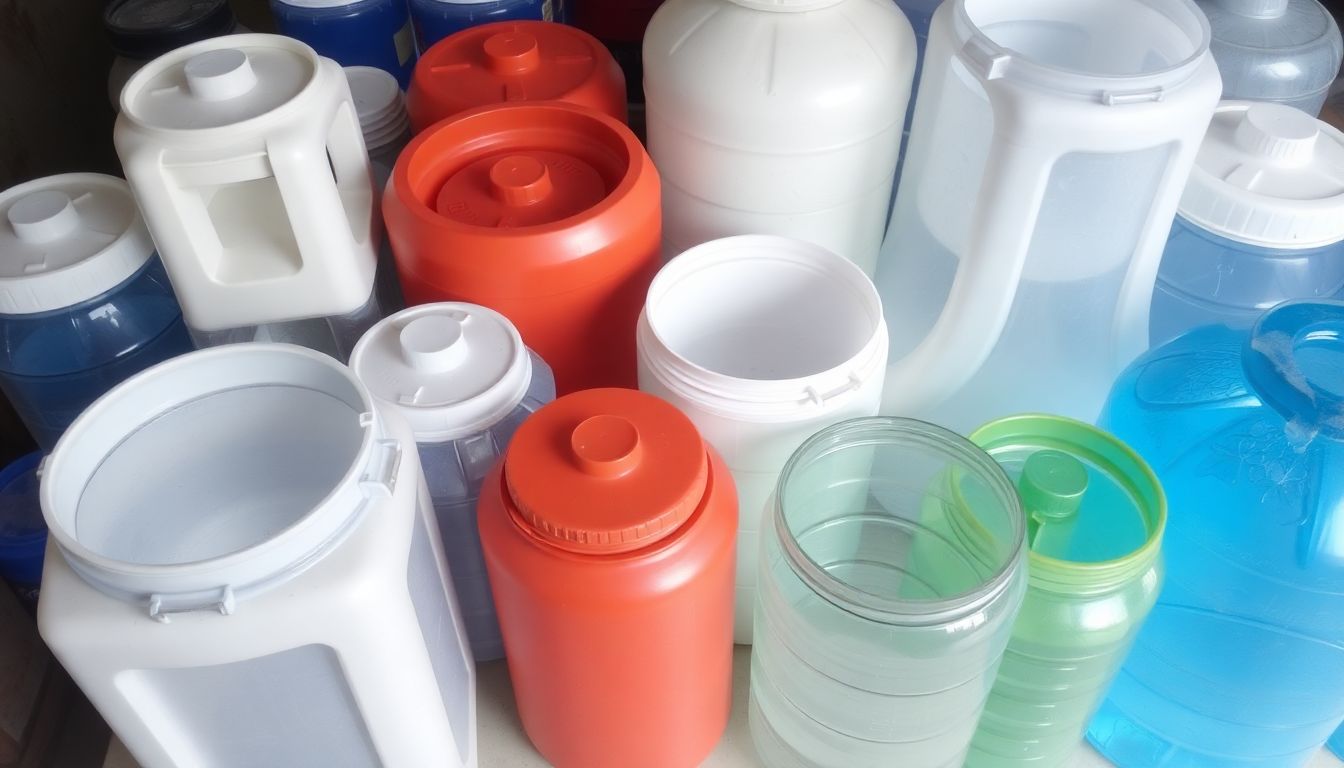
Choosing the Right Water Containers
Choosing the right water containers for long-term storage is a crucial decision that ensures the safety, purity, and longevity of your water supply. Let’s delve into the world of water containers, exploring their types, advantages, disadvantages, and selection criteria.
The first category of water containers is plastic. These are lightweight, durable, and affordable. They come in various sizes, making them convenient for both short-term and long-term storage. However, they can leach chemicals into the water over time, especially when exposed to heat or sunlight. To mitigate this, opt for food-grade plastic containers with the ‘HDPE’ or ‘PET’ label, which are safer for long-term use.
Next, we have stainless steel containers. These are robust, non-toxic, and do not leach chemicals. They are also resistant to bacteria growth and can maintain water quality for extended periods. However, they can be heavy and expensive. Moreover, they can dent or scratch, which might affect their longevity.
Glass containers are another option. They are non-toxic, do not absorb odors or flavors, and maintain water quality exceptionally well. However, they are fragile, heavy, and can break if not handled with care. They are also more expensive than plastic or stainless steel options.
For those looking for a more eco-friendly option, consider collapsible silicone containers. These are lightweight, durable, and do not leach chemicals. They are also easy to store when not in use. However, they may not be suitable for long-term storage due to their susceptibility to degradation from sunlight and heat.
When selecting the best water containers for long-term use, consider the following:
- Choose containers made from non-toxic, food-grade materials.
- Opt for containers that are resistant to bacteria growth and do not absorb odors or flavors.
- Consider the size and weight of the container, ensuring it’s manageable for your needs.
- Think about your budget and the long-term cost-effectiveness of the container.
- If you live in an area with frequent power outages, consider containers that can be sealed tightly to prevent contamination.
Lastly, always remember to clean and sanitize your water containers regularly to maintain the purity of your water supply.
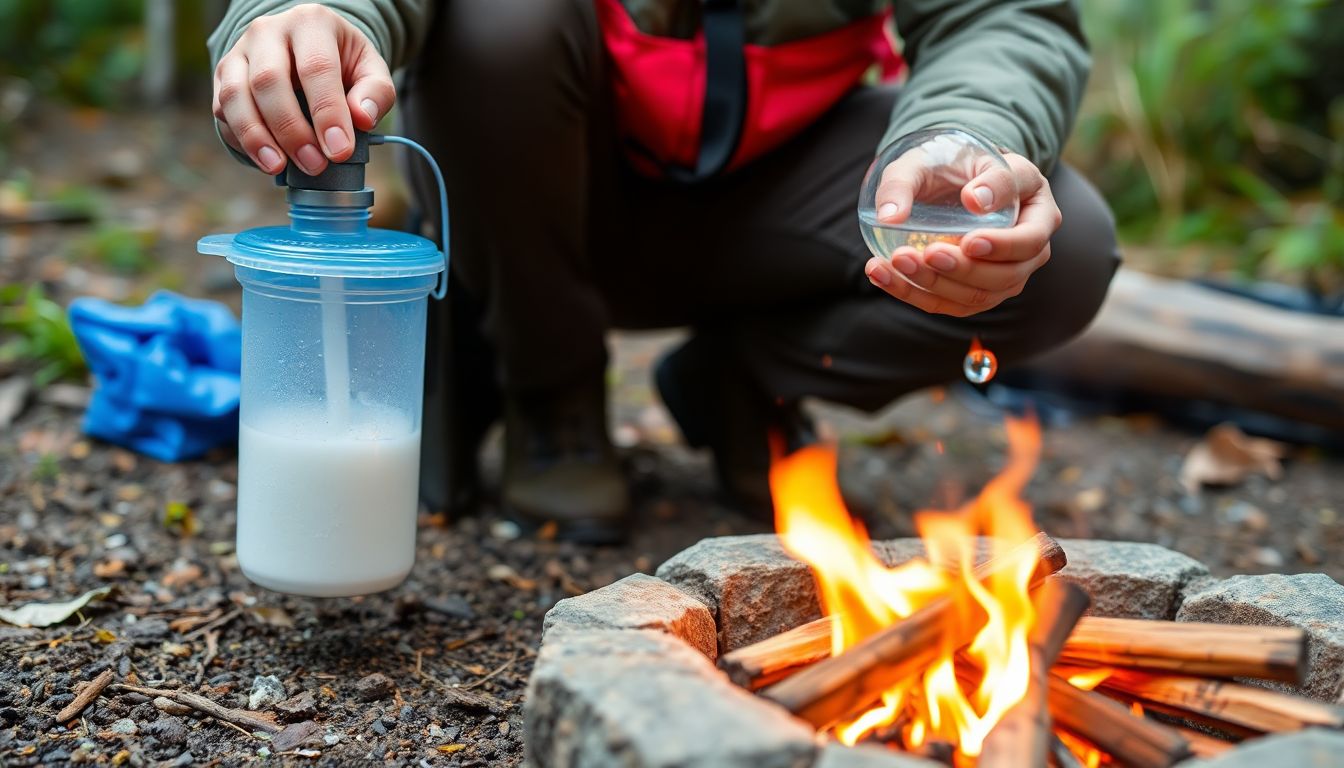
The Science Behind Water Purification
Water purification is a critical process that ensures the safety of our drinking water by removing impurities, contaminants, and harmful microorganisms. The process involves several methods, each with its own set of advantages and limitations. Let’s delve into the science behind water purification and explore how to choose the right method for your emergency water supply.
The primary goal of water purification is to eliminate pathogens, such as bacteria, viruses, and parasites, as well as remove chemicals and other pollutants. The most common methods of water purification include boiling, filtration, distillation, and disinfection using chemicals or ultraviolet (UV) light.
Boiling is a simple and effective method that kills all pathogens by heating water to its boiling point. However, it does not remove chemicals or improve water taste. It’s an excellent method for emergency situations, but it requires a heat source and can be time-consuming.
Filtration, on the other hand, uses physical barriers to remove impurities. Activated carbon filters are popular for their ability to absorb chemicals and improve taste. Reverse osmosis systems use semipermeable membranes to remove a wide range of contaminants, including bacteria and viruses. However, they can be slow and wasteful, producing a significant amount of wastewater.
Distillation involves heating water to produce steam, leaving behind impurities, and then condensing the steam back into pure water. This method is highly effective in removing both pathogens and chemicals but requires a significant amount of energy and can be slow.
Chemical disinfection, such as using chlorine or iodine, and UV light disinfection are also popular methods. They are effective in killing pathogens but do not remove chemicals or improve water taste. Chemical disinfection can also leave behind residual chemicals that may have health implications with long-term use.
When choosing the right method for your emergency water supply, consider the following factors:
- Ease of use and portability, especially if you’re on the go or in a disaster situation.
- Effectiveness against the specific contaminants present in your water source.
- Speed of purification, as you may need a quick supply of clean water.
- Cost and maintenance requirements.
- Environmental impact, considering factors like energy usage and wastewater production.
In some cases, a combination of methods may be necessary to ensure the safety and quality of your water supply. Always remember that the best method is the one that you can use consistently and effectively in your specific situation.

Storing Water Safely and Effectively
Storing water safely and effectively is a crucial aspect of emergency preparedness. Here’s a detailed guide on how to fill, seal, and store water containers to ensure their longevity and prevent contamination.
Firstly, choose your containers wisely. The best options are food-grade plastic bottles, glass jars with airtight lids, or heavy-duty plastic containers designed for water storage. Avoid using milk jugs or other containers that are not specifically designed for long-term storage, as they can leach chemicals into the water.
Before filling your containers, clean them thoroughly with hot, soapy water. Rinse them well to remove any residue. If you’re using new containers, it’s a good idea to rinse them once or twice before filling to remove any manufacturing residue.
To fill your containers, use a funnel to minimize contact with the water. Fill them to the brim, leaving no air space. This helps to prevent contamination and the growth of bacteria. Once filled, seal the containers tightly. If you’re using a lid with a gasket, make sure it’s properly seated and the lid is securely fastened.
Label your containers with the date they were filled. This will help you rotate your water supply and use the oldest water first. Store your containers in a cool, dark place, away from direct sunlight and heat sources. The ideal storage temperature is between 50-70°F (10-21°C).
To further protect your water from contamination, consider using water preserver treatments. These are non-chemical additives that extend the shelf life of stored water by inhibiting the growth of bacteria. Always follow the manufacturer’s instructions when using these products.
Regularly inspect your stored water. Look for any signs of contamination, such as cloudiness or an off smell. If you notice any issues, discard the water and start over with a new container. It’s also a good idea to rotate your water supply every six months to ensure freshness.
In case of an emergency, it’s recommended to have at least one gallon of water per person per day, with a two-week supply for each person in your household. This will ensure you have enough water for drinking, cooking, and personal hygiene.
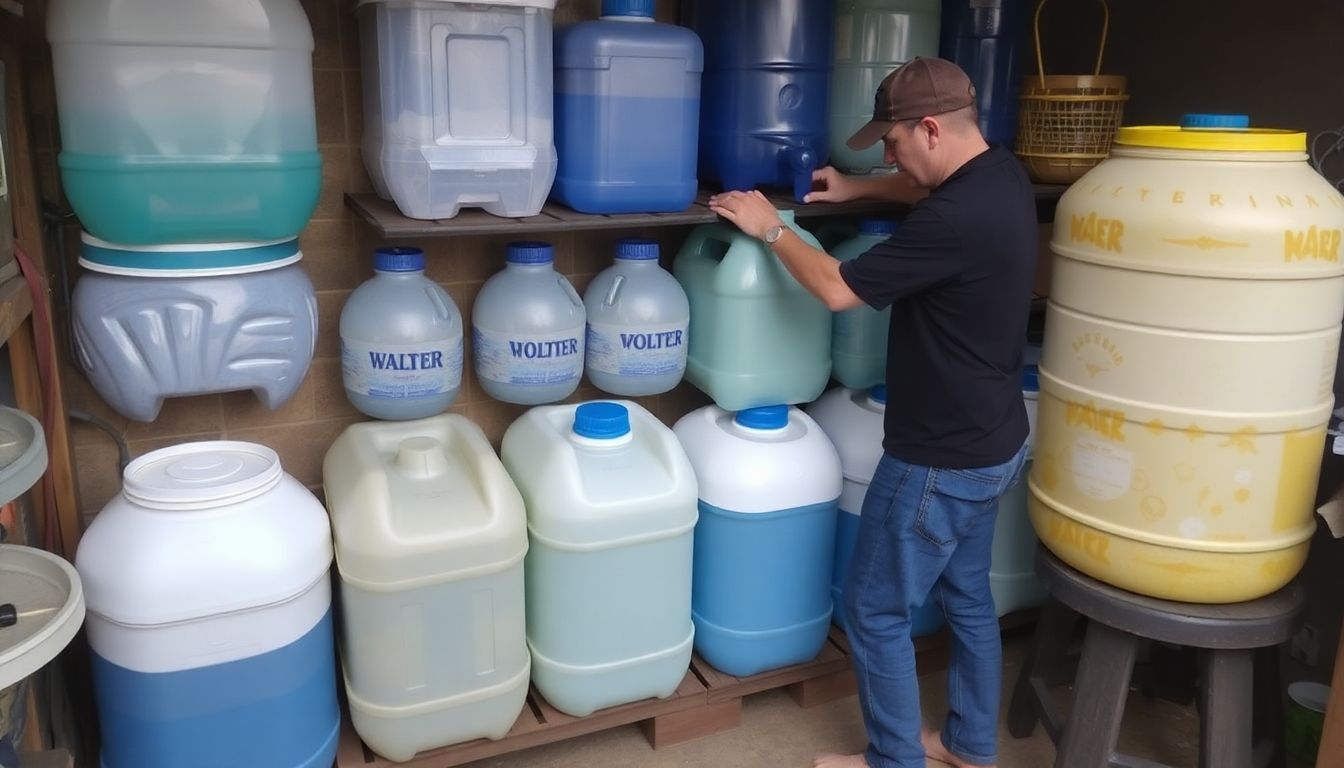
Rotating Your Water Supply: The Importance of Freshness
Rotating your water supply might sound like an unusual task, but it’s a crucial practice that ensures you’re always drinking and using fresh, safe water. Let’s dive into the concept, the frequency, and the benefits of this simple yet vital process.
The concept of rotating water supplies is straightforward. It involves using and replacing your stored water on a regular basis to maintain its freshness and quality. This is particularly important for water stored in tanks or containers, which can become stagnant over time.
But how often should you rotate your water supply? The general rule of thumb is every six months. However, this can vary depending on factors such as the water’s source, the container’s material, and the water’s intended use. For instance, water used for drinking should be rotated more frequently, perhaps every three months, to ensure its purity and safety.
Now, why is it so important to maintain a fresh water supply? Rotating your water supply brings several benefits:
- Prevents Stagnation: Stagnant water can breed bacteria and other microorganisms, making it unsafe for consumption and use.
- Preserves Taste: Fresh water tastes better. Rotating your supply ensures you’re always enjoying the best taste.
- Keeps Water Potable: Regular rotation helps maintain the water’s quality, ensuring it’s safe to drink and use for other purposes.
- Prevents Algal Growth: In warm weather, stagnant water can promote the growth of algae, which can be harmful if ingested.
So, next time you’re refilling your water supply, remember to set a reminder for your next rotation. Your health and taste buds will thank you!
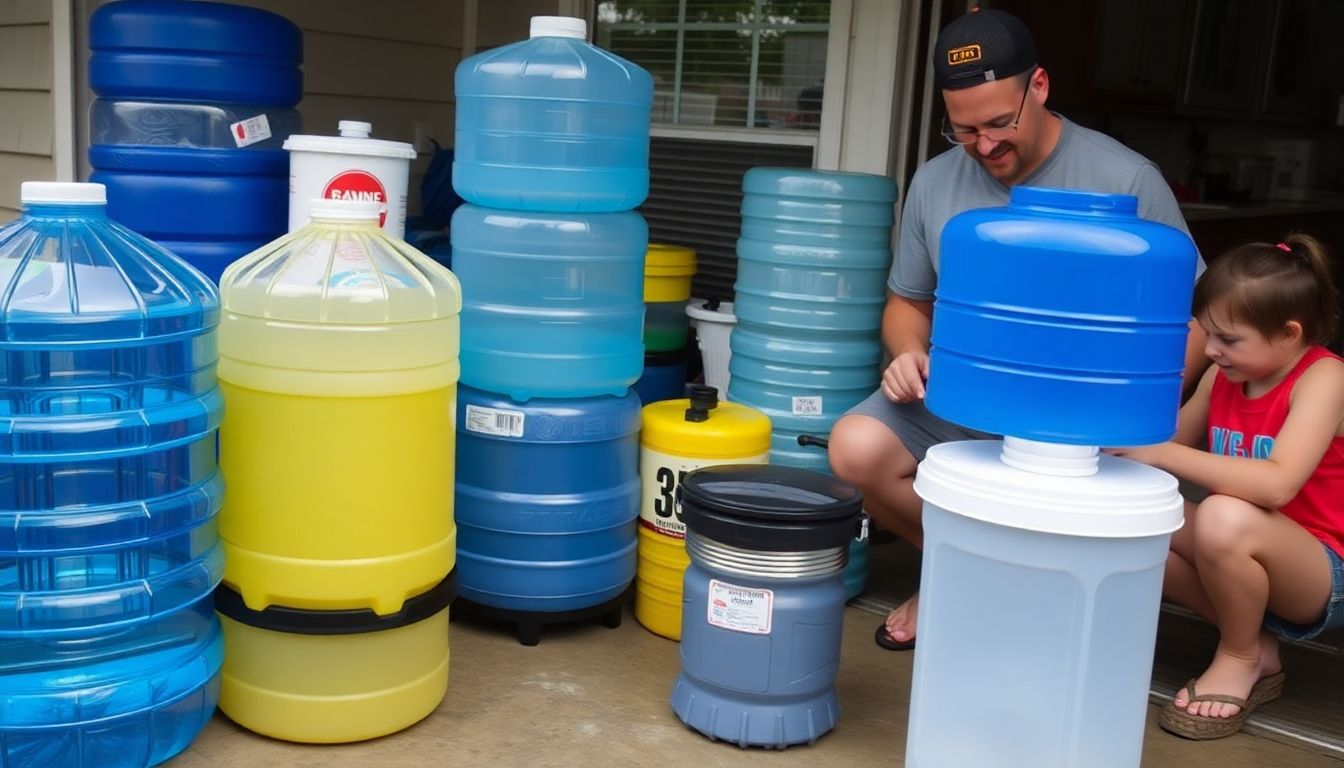
Water Storage for Specific Scenarios
Water, an essential resource for survival, requires careful planning and storage, especially in emergency scenarios. Let’s explore various situations and adapt our water storage strategies accordingly.
Power Outages: During short-term power outages, your primary concern is keeping water clean and safe to drink. Store water in clean, food-grade containers, and keep them in a cool, dark place. Rotate your water supply every six months to ensure freshness. If the outage lasts more than a week, consider collecting rainwater or melting snow for additional supply. Remember, water purification tablets or a portable water filter can be lifesavers.
Natural Disasters: Natural disasters like hurricanes, earthquakes, or floods can disrupt water supplies. Before the disaster strikes, store at least one gallon of water per person per day, with a minimum of a three-day supply. For a family of four, that’s twelve gallons. Store water in various containers, including large, heavy-duty plastic containers, and place them in easily accessible locations. After the disaster, be cautious of water quality. Use only stored water or purify water from other sources.
Long-Term Crises: In long-term crises, like economic collapse or societal breakdown, water storage becomes even more critical. Aim for a one-year supply, which is about 50 gallons per person per year. This might seem daunting, but it’s achievable with careful planning. Consider collecting rainwater, digging a well, or even treating wastewater. Store water in various locations, including underground or in hidden caches. Also, consider bartering for water with other survivors. Lastly, always have a water purification system in place, as water sources can become contaminated.
In all scenarios, remember to store water for other uses too, not just drinking. We need water for cooking, cleaning, and hygiene. And don’t forget our furry friends
- they need water too! Always keep your water supply rotated, and never rely on a single source. Diversify your water storage strategy to ensure you’re prepared for any scenario.
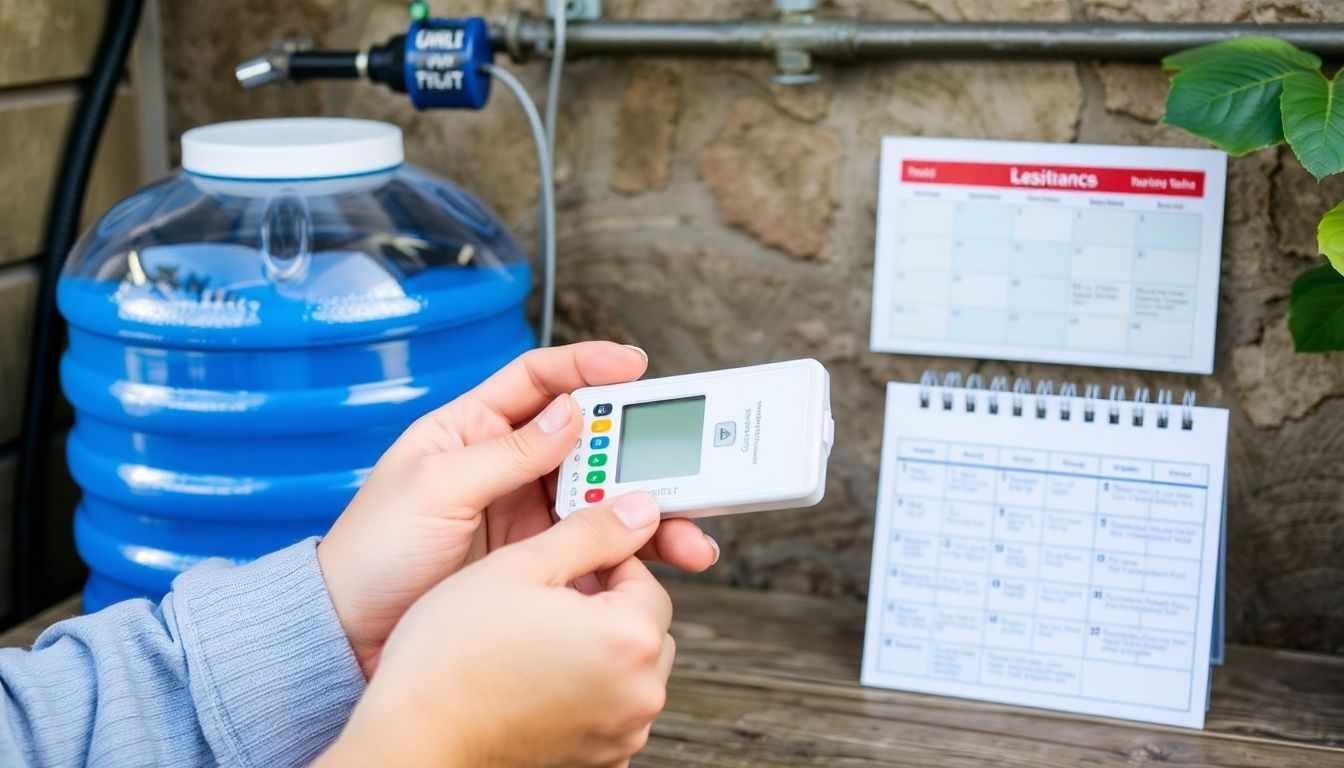
Maintaining a Clean Water Supply: Regular Checks and Maintenance
Maintaining a clean water supply is not just about having a spotless water tank; it’s about ensuring the safety and health of you and your loved ones. Regular checks and maintenance are not optional; they are a necessity. Let’s dive into why these checks are important and how to conduct them. Stored water, especially in tanks, can become a breeding ground for bacteria and other contaminants if not properly maintained. Regular checks help prevent the growth of these harmful microorganisms, ensuring your water remains safe for drinking, cooking, and other uses. Moreover, regular maintenance extends the lifespan of your water storage system, saving you from costly repairs or replacements. So, how do you test water quality? The process is quite simple and can be done using basic home testing kits. These kits usually test for parameters like pH levels, total dissolved solids (TDS), and the presence of harmful bacteria like E. coli. Here are the steps to follow:
- First, collect a water sample from the middle of your tank, ensuring it’s not contaminated during the process.
- Follow the instructions provided with your testing kit to test the sample for the specified parameters.
- Compare your results with the acceptable limits provided in the kit’s instructions. If the results are outside these limits, it’s time to take action.
Now, let’s talk about maintenance tasks. These tasks are not complex and can be done by anyone with a little bit of care and attention.
- Regular Cleaning: Clean your water tank at least once a year. This involves draining the tank, scrubbing the interior with a suitable cleaner, and rinsing it thoroughly before refilling.
- Inspection: Regularly inspect your tank for any signs of damage, such as cracks, rust, or leaks. These can allow contaminants to enter your water supply.
- Filtration: Use a good quality water filter to remove impurities and improve the taste of your water. Remember to replace the filter cartridges regularly.
In conclusion, maintaining a clean water supply is not a chore; it’s a responsibility. With regular checks and maintenance, you can ensure that the water you use is safe, clean, and healthy. So, don’t wait, start testing and maintaining your water supply today!

Water Storage Solutions for Small Spaces
Living in an apartment or a small home doesn’t mean you have to compromise on water storage. In fact, it’s more important than ever to have efficient water storage solutions to ensure you’re prepared for any situation. Let’s explore some creative and space-saving ideas to maximize your water storage capacity in small spaces.
First, consider the often overlooked space under your sink. This area is perfect for storing water containers. Use stackable, rectangular containers to make the most of the space. Remember to secure them to prevent tipping. Here’s a simple step-by-step guide:
- Measure the space under your sink to ensure you get the right size containers.
- Choose containers with secure lids to prevent leaks.
- Stack them neatly, with the heaviest at the bottom.
- Secure them in place using bungee cords or Velcro straps.
Next, think vertically. Wall-mounted water storage solutions are a great way to save space. You can find or make wall-mounted racks or shelves to store your water containers. Just ensure they’re securely attached to the wall and won’t topple over.
Another innovative idea is to use collapsible water containers. These are perfect for small spaces as they can be folded away when not in use. They come in various sizes and can be stacked when full.
Don’t forget about your balcony or outdoor space, if you have one. This can be a great place to store extra water, especially if it’s shaded from the sun. Just ensure the water is protected from contaminants and pests.
Lastly, consider investing in a water purifier or filter. This can help you reuse and recycle water, reducing the amount you need to store. It’s not only space-saving but also environmentally friendly.
With these creative and efficient water storage solutions, you can turn your small space into a water storage haven, ensuring you’re always prepared.
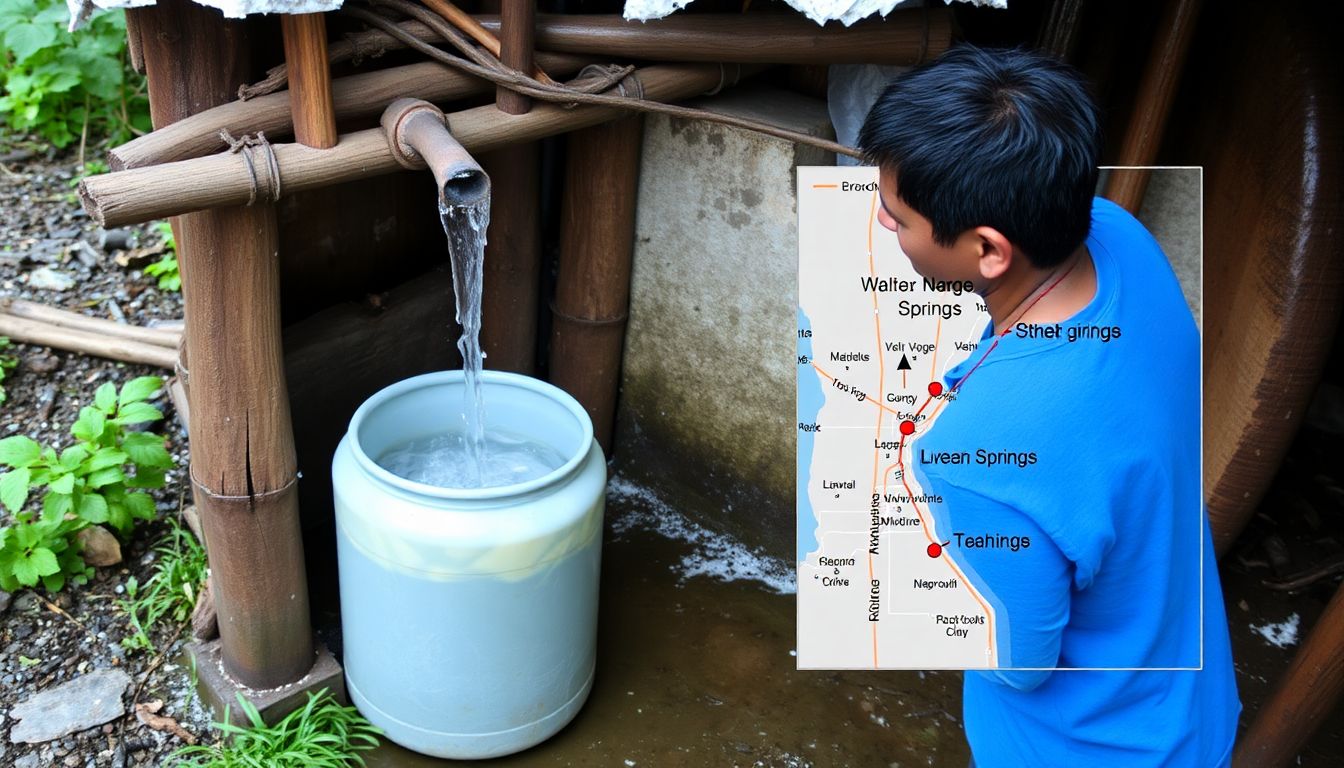
Emergency Water Sources: When Your Stored Supply Runs Out
When disaster strikes and your stored water supply runs out, it’s crucial to know how to find and purify alternative water sources. One such source is rainwater, which can be harvested using simple and effective methods. Installing a rainwater harvesting system involves collecting water from your roof and gutters, filtering it to remove debris, and storing it in a clean container. This water can be used for drinking, cooking, and other essential needs once it’s been purified.
Another reliable emergency water source is groundwater, which can be accessed through wells or springs. Wells are typically constructed by digging deep into the earth until water is found. To ensure safety, it’s important to maintain the well and keep it free from contaminants. Springs, on the other hand, are natural sources of water that flow from the ground. They can be found in areas with high groundwater levels, often in mountainous regions.
When collecting water from these sources, it’s essential to follow safety guidelines to prevent waterborne diseases. First, ensure that the water is clear and free from any visible contaminants. Next, use a water filter to remove any remaining impurities. Boiling water is another effective method of purification. Bring the water to a rolling boil for at least one minute (or three minutes at higher altitudes) to kill bacteria and parasites. Finally, allow the water to cool before using it for drinking or cooking. Always remember that water purification is a critical step in ensuring your safety during an emergency.
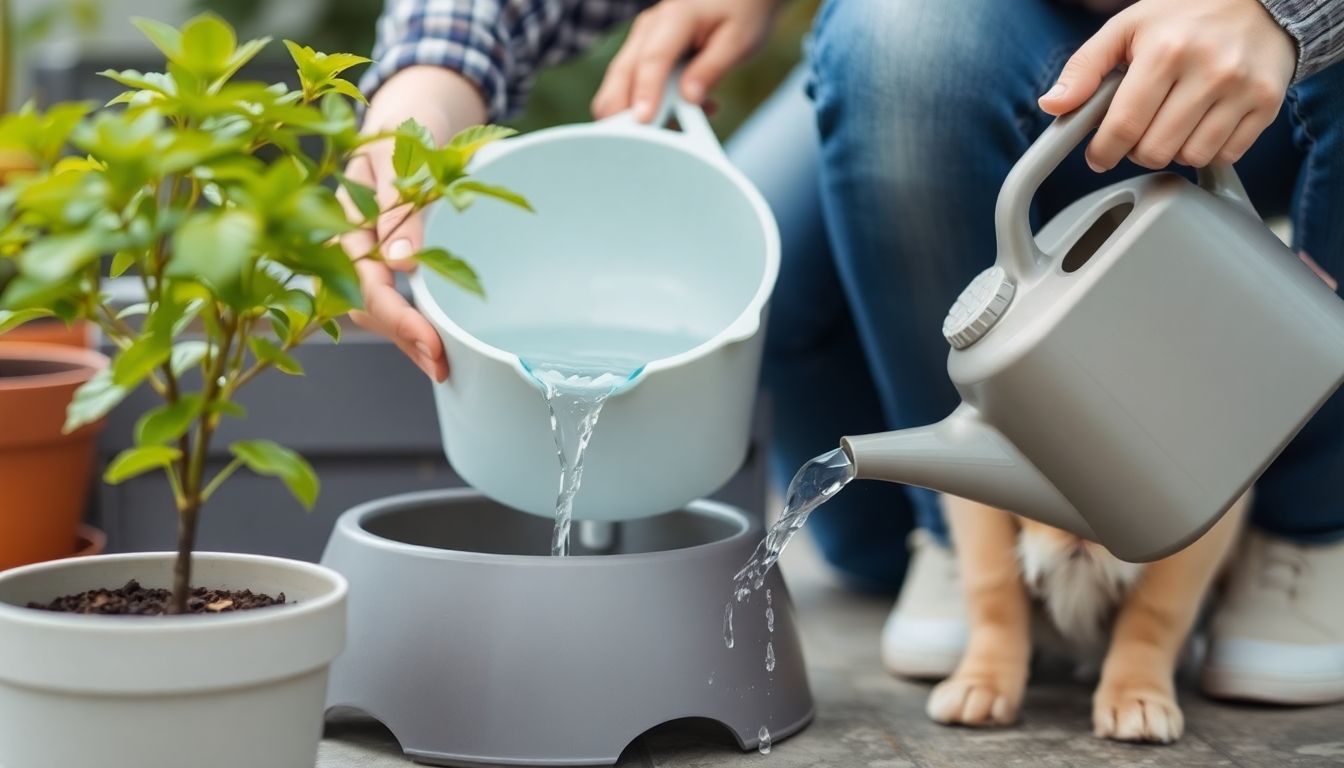
Water Storage for Pets and Plants: Don’t Forget Our Furry Friends and Green Thumbs
In our bustling world, it’s easy to overlook the simple yet crucial needs of our beloved pets and plants. Water, the essence of life, is often taken for granted, yet it’s a vital resource that demands our attention and care. Let’s delve into the importance of water storage for our furry friends and green thumbs, ensuring they thrive in our homes.
Pets, much like us, require a constant supply of fresh water. The amount varies depending on their size, activity level, and breed. On average, a dog should drink about 1 ounce of water per pound of body weight daily, while cats need about 3.5 to 4.5 ounces per 5 pounds of body weight. It’s crucial to have a water storage solution that can meet these needs, preventing dehydration and related health issues.
Plants, too, are heavy drinkers, especially during the growing season. The amount of water they need depends on their size, type, and the weather. A general rule is to water them when the top inch of soil feels dry. Having a water storage system ensures you’re never caught short, allowing your plants to grow lush and green.
Now, let’s talk about keeping this water clean and safe. Here are some steps:
- Use Clean Containers: Store water in clean, food-grade containers to prevent contamination.
- Change Water Regularly: Pets and plants alike prefer fresh water. For pets, change their water daily, and for plants, ensure you’re using fresh water each time you water them.
- Avoid Tap Water: If possible, use filtered or rainwater. Tap water can contain chemicals and minerals that may not be suitable for your pets or plants.
- Keep it Cool: Store water in a cool, shaded area to prevent bacterial growth. Never store water in direct sunlight.
By following these steps, you can ensure a clean and safe water supply for your pets and plants, fostering a healthy and happy environment for all.
FAQ
Why is it crucial to have an emergency water supply?
How much water should I store for an emergency?
What are the best containers for water storage?
How should I treat water for long-term storage?
- boiling: bring water to a rolling boil for at least one minute (or three minutes at higher altitudes), then let it cool before storing,
- using water purification tablets or drops,
- using a UV water purifier,
- or filtering the water through a portable water filter.
Once treated, store the water in clean, sanitized containers with tight-fitting lids.
How long can stored water last?
Can I store water in my freezer for emergency use?
How can I purify water from alternative sources during a crisis?
- boiling,
- using water purification tablets or drops,
- using a UV water purifier,
- filtering the water through a portable water filter,
- or using a homemade water filter made from materials like sand, gravel, and activated charcoal.
Always treat water from alternative sources, as it may contain harmful bacteria, viruses, or chemicals.
What is the best way to store water for long-term use in a large group or community?
How can I maintain the quality of my stored water over time?
- Store containers in a cool, dark place, away from direct sunlight and heat sources,
- Keep containers off the ground to prevent contamination,
- Regularly inspect containers for any signs of damage or leaks,
- Rotate your water supply by using the oldest water first,
- Test the water quality periodically using a home water test kit,
- And add a small amount of non-scented household bleach (8 drops per gallon) to stored water as a preservative, if desired.
By following these guidelines, you can help ensure that your stored water remains clean and safe to use.



